What telescope should be your first one? Or your only one for that matter?
You don't know a lot about the mechanics of telescopes right? Optics, exit pupil, light gathering power, magnification, alt-azimuth mount? etc. etc. etc. So what telescope should you buy as a first telescope. Cost a factor? What kind of value can you get when you are not sure about what defines value?
A quick bit of advice!
You wouldn't buy a car without knowing how to drive would you? A telescope is similar in that you can get just about any type of telescope, take it outside at night and then... you are scratching your head. What do you do? So, I recommend you get yourself a book. There are so many amazin g things to see with your telescope. You just need to know where they are! A book will do this for you.

If you are on a budget and want to get a good astronomy experience without spending too much this is a good choice for you to get started:
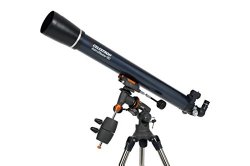
Celestron 21064 AstroMaster 90 EQ Refractor Telescope
If you're looking for a dual-purpose telescope appropriate for both terrestrial and celestial viewing, then the AstroMaster Series is for you. Each AstroMaster model is capable of giving correct views of land and sky. The AstroMaster Series produce bright, clear images of the Moon and planets. It is easy to see the moons of Jupiter and the rings of Saturn with every one of these fine instruments. For views of the brighter deep space objects like galaxies and nebulae, we recommend the larger aperture and light gathering ability of the Newtonian reflectors.

If you are a techie and love gadgets and you have discretionary income this is a good first scope for you. Once you align this telescope which is a process you do when you start your star gazing session it is ready to go. It will actually move itself to thousands of objects in the night sky. Kind of neat and it takes the treasure hunting aspect out of astronomy.
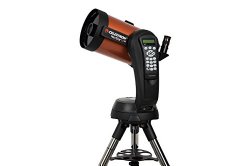
Celestron NexStar 6 SE Telescope
- 6-inch Schmidt-Cassegrain telescope; StarBright XLT high transmission coatings come standard
- StarPointer finderscope to help with alignment and accurately locating objects
- Quick-release fork arm mount, optical tube, and accessory tray for no-tool setup
- SkyAlign allows you to align on any three bright celestial objects, making for a fast and easy alignment process
- Nearly 40,000 object database with 200 user-definable objects and expanded information on over 200 objects
Still not sure about getting a telescope. You might consider getting a pair of astronomy suitable binoculars. This way you can use them for other pursuits. With a big set of binoculars like this you are going to want a sturdy tripod. They get heavy quickly.
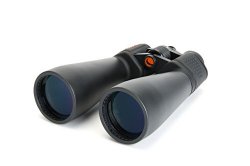
Celestron SkyMaster Giant 15x70 Binoculars with Tripod Adapter
Celestron and ;s SkyMaster Series of large aperture binoculars are a phenomenal value for high performance binoculars ideal for astronomical viewing or for terrestrial (land) use - especially over long distances. Each SkyMaster model features high quality BAK-4 prisms and multi-coated optics for enhanced contrast. Celestron has designed and engineered the larger SkyMaster models to meet the special demands of extended astronomical or terrestrial viewing sessions. The 15x70 version is one of the most popular models in the series. It offers serious large aperture light gathering in an affordable and reasonably lightweight configuration.

I highly recommend you also get a book so you know what to do when you take your telescope out! It will make a substantial difference in your astronomy experience!
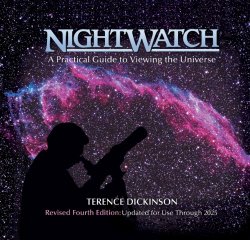
NightWatch: A Practical Guide to Viewing the Universe
NightWatch has been acclaimed as the best general interest introduction to astronomy. The fourth edition has improvements over the 3rd edition in every chapter, including:
- The famous charts, ideal for stargazers using a small telescope or binoculars
- A complete update of the equipment section, including computerized telescopes
- An enlarged photography section, including how-to instructions for using the new generation of digital cameras for astronomical photography, both with and without a telescope
- The tables of future solar and lunar eclipses, planetary conjunctions and planet locations, updated through 2025.
This edition includes star charts for use in the southern hemisphere. There are also dozens of new photographs throughout the book that show the latest thrilling discoveries made by current space observatories and probes.
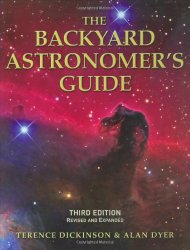
The Backyard Astronomer's Guide
The modern classic, completely updated.
The newest edition of The Backyard Astronomer's Guide includes the latest data and answers the questions most often asked by home astronomers, from beginners to experienced stargazers. Terence Dickinson and Alan Dyer provide expert guidance on the right types of telescopes and other equipment; photographing the stars through a telescope; and star charts, software and other references. They cover daytime and twilight observing, planetary and deep-sky observing, and much more.
With over 500 color photographs and illustrations, The Backyard Astronomer's Guide is one of the most valuable, beautiful and user-friendly astronomy books ever produced.
|
![]()










